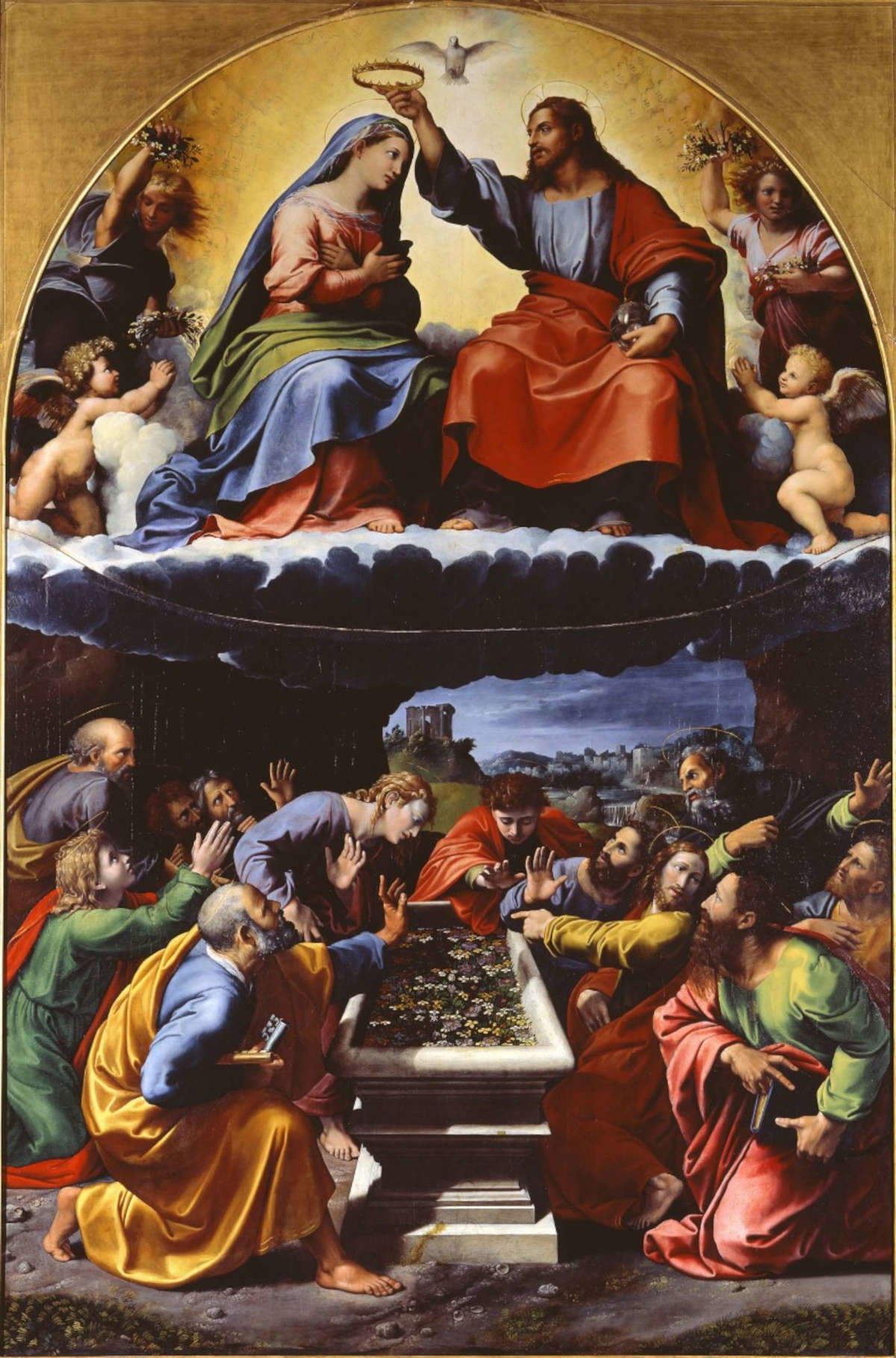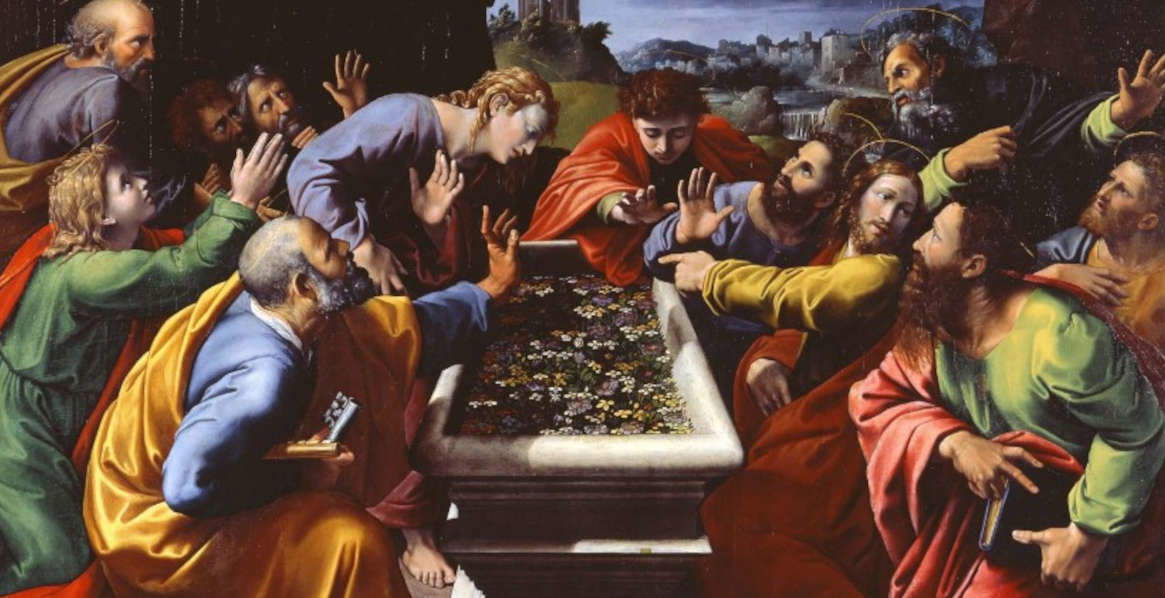After more than two centuries, one of the most significant works in Perugia ’s artistic history is returning to the city. From Oct. 1, 2025, to Jan. 7, 2026, the Museo del Capitolo of the Cathedral of San Lorenzo will host the exhibition The long-awaited return. Raphael for Monteluce from the Vatican Museums, which brings back to Perugia theCoronation of the Virgin, also known as the Madonna of Monteluce, commissioned from Raphael Sanzio and created by his pupils Giulio Romano and Giovan Francesco Penni for the church of Santa Maria Assunta in Monteluce. The work, stolen in 1797 by Napoleon’s troops and kept since then in the Vatican Museums, is displayed for the first time alongside the predella with stories from the life of Mary, painted by Berto di Giovanni, on loan from the National Gallery of Umbria. The reunion of the two parts restores a visual and spiritual unity that had been missing for centuries, offering visitors the opportunity to admire the work in its narrative integrity.
The initiative is the result of a collaboration between the Archdiocese of Perugia-Città della Pieve and the Vatican Museums, with the support of the Perugia Foundation, and is part of the Jubilee of Hope calendar. It is an exhibition that has not only an artistic value, but also a symbolic one: the return of a work designed for the city and the Poor Clare nuns, now returned to the community and the territory.

The exhibition itinerary is designed to accompany the viewer to discover a borderline work, poised between the hand of genius and that of the workshop, between monastic seclusion and city life, between art and spirituality. The uniqueness of theCoronation lies in its iconography, which merges the Assumption and the Coronation of the Virgin into a single moment, generating a monumental and powerful image, capable of conveying at once glory, awe and hope.
Formally, the work stands out for the quality of its color rendering. The golden light of the sky, framing the celestial scene, dialogues with the intense blues and leaden tones of the cloudy landscapes, while the apostles, gathered at the foot of the tomb, are rendered with a variety of colors that emphasizes the richness of the robes and the choral nature of the scene. It is an example of the refinement of Raphael’s workshop, capable of maintaining the balance between harmony and chromatic contrast, offering a composition in which the divine and earthly elements come together.
The history of this work is marked by complex events. Commissioned for the ancient monastic settlement of the Poor Clares of Monteluce, the altarpiece was an integral part of the spirituality and religious life of the community.Raphael was able to complete some drawings in time, but at the date of his death in 1520, the work was still far from finished. Bringing the work to completion were Giulio Romano and Giovan Francesco Penni, who signed a new contract in 1523 and delivered the work in 1525. In 1797, during the Napoleonic requisitions, it was confiscated along with many other church properties and transferred to Rome. It had not returned to Perugia since then, becoming a symbol of a shared loss and a broken artistic memory. Today the exhibition gives the public and scholars the chance to see it again in the city for which it was conceived. The presence of Berto di Giovanni’s predella adds an important element: this narrative cycle dedicated to the life of Mary accompanies and complements the main scene, offering a complete reading of the iconographic program.
The exhibition, set up in the spaces of Isola San Lorenzo, thus also aims to be an opportunity to reflect on the relationship between art and identity. Bringing together, after more than two centuries, the parts of such an important Renaissance work means returning an essential fragment of Perugia’s artistic and religious history. It also means returning a sense of continuity to the community, which throughout its history has seen many of its most celebrated works leave and often fail to return.
The title of the exhibition, The Expected Return, sums up the sentiment that accompanies the event. Expected by citizens, scholars and enthusiasts, the return of theCoronation represents a moment of reparation and remembrance, but also a sign of hope, in keeping with the Jubilee context. It is not just about admiring an important work of the Renaissance, but about recognizing the link between a work and the community that generated it, between great art and the territory that gave rise to it.
The exhibition will be on view until Jan. 7, 2026, at the Museo del Capitolo della Cattedrale di San Lorenzo in Perugia’s Piazza IV Novembre. Isola San Lorenzo, already a place of enhancement of the city’s artistic and cultural heritage, thus confirms itself as one of the main hubs of Umbrian cultural life. For information and reservations, the museum’s official website www.isolasanlorenzo.it, contacts and social pages are available.
 |
| Madonna of Monteluce returns to Perugia for first time since Napoleonic spoliation |
Warning: the translation into English of the original Italian article was created using automatic tools. We undertake to review all articles, but we do not guarantee the total absence of inaccuracies in the translation due to the program. You can find the original by clicking on the ITA button. If you find any mistake,please contact us.